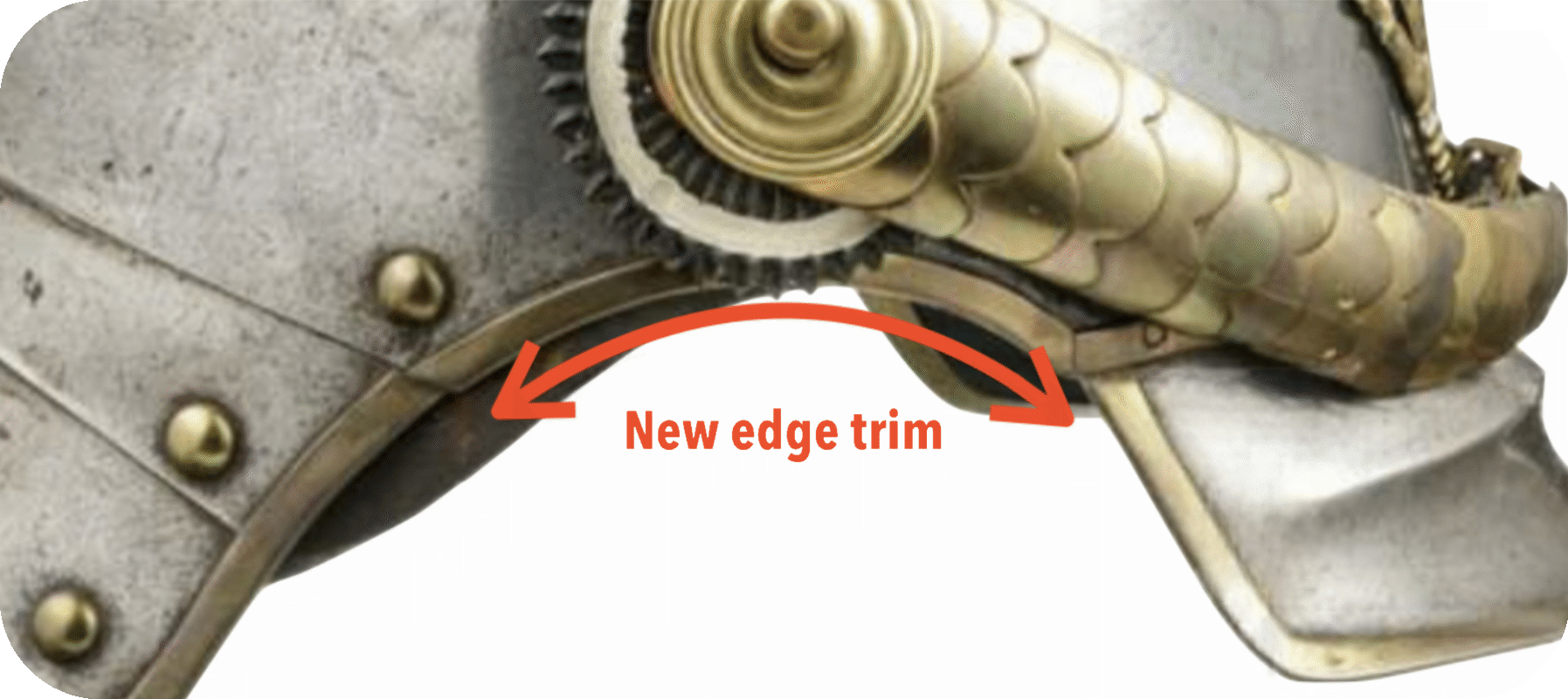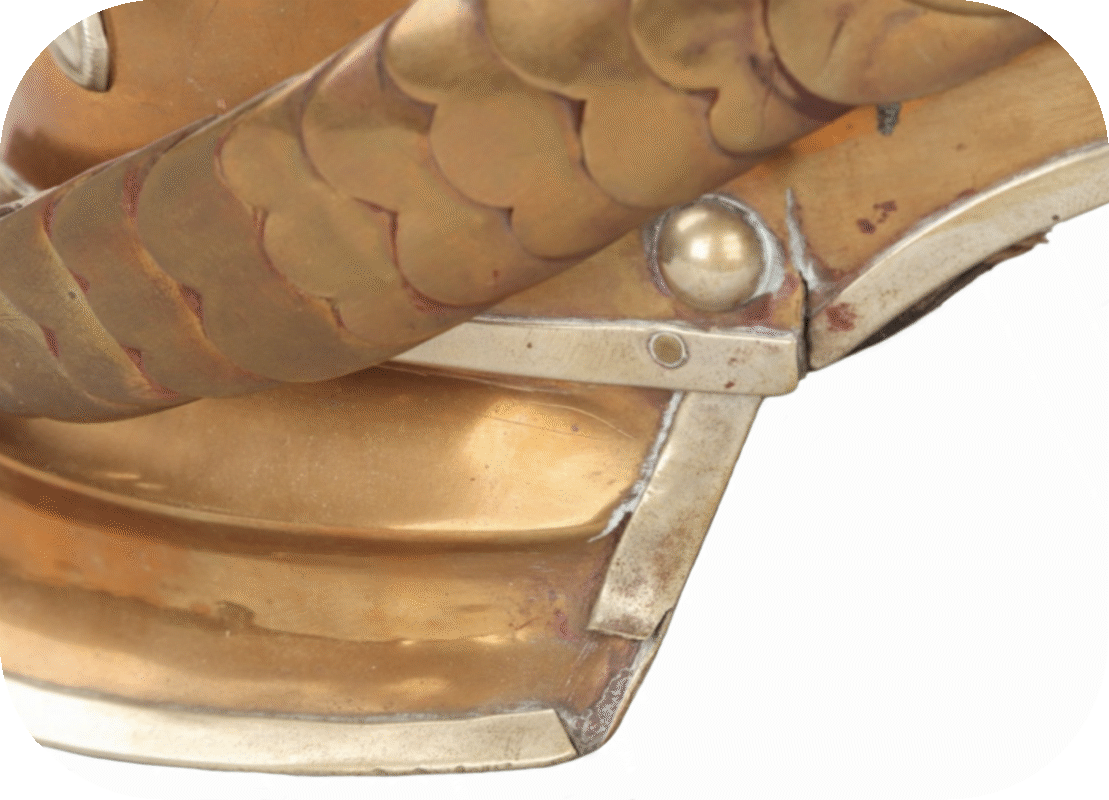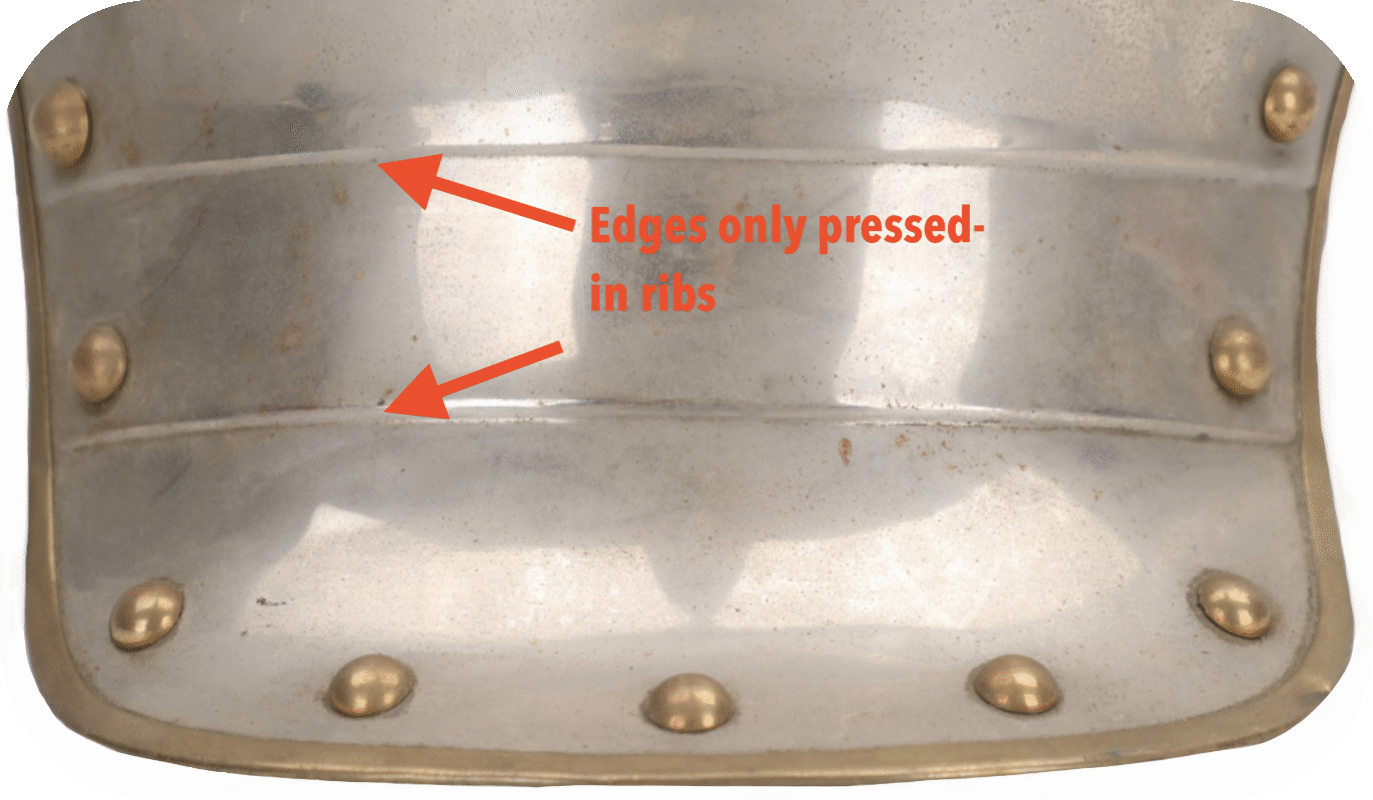The metal Pickelhaube M1867 (development until 1888)
1867 - Cuirassiers
After the Austrian campaign, the efforts to lighten the weight continued. Although the helmet was just modified in 1862, a new helmet type M1867 was introduced for the cuirassiers on April 25, 1867. The changes also included an adjustment of the appearance of the cuirassier helmet, which was considered too martial at that time.
Enlisted men:
- The height of the helmet shell was slightly reduced, the basic shape was now more bowl-shaped (Fig. 1 Left). There were always 17 large bolts used to assemble the helmet.
- The squared front visor was reduced again while keeping the basic shape, its height was only 5.0 - 6.0 cm, the width 17.5 - 19.4 cm.
- A new element of this helmet type was the only 0.4 cm wide metal trim on both sides of the helmet shell, which ran between the front and rear visors (Fig. 2). This was done to prevent the helmet shell from tearing, as often happened with tombac helmets in the area where the front visor trim ended before (Fig. 3). There are a lot of reworked helmets where the trim were soldered on afterwards. These are mostly recognizable by an unclean joint between the metal trims.
- The total height of the spike was only about 10.5 cm, the neck of the spikebase still had 2 air holes (Fig. 1).
- The parade eagle was now attached to the helmet using a larger threaded stud and one large wing nut. This method replaced the 4 small pins and squared nuts below the eagle.
Officers:
The changes listed above also affected the officer's helmet, but with following differences:
- The rear visor was no longer made of 3 sheets but of a single piece. Ribs were pressed in as dummy joints to make the sheet look like 3 pieces and to stiffen the surface (Fig. 4). Also for the officers helmets 17 large screws were used for assembly.
- The new metal trim between the visors was 0,5 cm wide for officer helmets, just like the visor trims.
However, all these changes again brought only an insignificant weight reduction of a few grams. The helmet of the enlisted men and officers weighed on average about 825 g.




